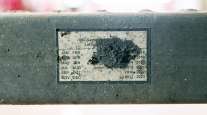Routine Maintenance Keeps HVAC Units Humming

[Stay on top of transportation news: Get TTNews in your inbox.]
Most experts say that detecting and dealing with refrigerant leaks is the biggest challenge in regular maintenance of air conditioning systems on Class 8 tractors. For that reason, regular maintenance on the systems is critical.
Steven Schaeber, manager of service training and technical editor for the Mobile Air Conditioning Society, said there’s no such thing as a leak-free HVAC system on a tractor. They all have minute leaks at every joint, at every O-ring connection, every sealing point. The hunt to find and address leaks is constant. Without regular maintenance, Schaeber noted, the problems only get worse.
“Over a period of time — it may be seven, eight, 10 years — the refrigerant charge drops down, and if you don’t maintain the charge level you run the risk of overheating the compressor and that’s where it fails,” he said.

Schaeber
Schaeber added the leaked refrigerant instantly evaporates; thus electronic leak detectors and fluorescent trace dyes are the methods for tracking down leaks. “In my opinion you have to use both,” he said. “There are some leaks that you can’t find with dye.”
Performing motor vehicle air conditioning (MVAC) work requires the technician to be certified. The U.S. Environmental Protection Agency states that “any person who repairs or services MVAC systems for consideration (payment or bartering) must be properly trained and certified under Section 609 of the Clean Air Act by an EPA-approved program.”
EPA adds that its approved technician training and certification programs “provide education on the proper use of MVAC servicing equipment, the applicable regulatory requirements, the importance of refrigerant recovery, and the effects of improper handling of refrigerants on the ozone layer and climate.”

Regular AC unit maintenance minimizes major issues in the long term. (Mobile Transportation Service)
To be certified, technicians must be trained by an EPA-approved program — i.e. the National Institute of Automotive Service Excellence — and pass a test demonstrating knowledge in these areas.
Travis Wynes, a former consultant helping fleets improve maintenance practices and shop operations, said in order to stay on top of HVAC maintenance, fleet technicians need to be properly versed on the subject. “One of the biggest problems I saw was just a lack of training, and a lack of anyone to put procedures and policies in place,” he said.
Manufacturing and design advancements introduced during the past 10 years have helped to reduce emissions, makers of the systems and the maintenance experts said.
Components have improved in the past 10 years, and high-performance condensers and evaporators have been introduced during that time as well, helping to reduce emissions from the system while providing greater efficiency, said Brett Herrmann, engineering lead in mechanical design for Rockford, Ill.-based Bergstrom Inc.
More Q1 Calibrate
►Trailer GHG Ruling Muted by California Rules, Industry's Direction
►Five Questions: Kerry Stritt, Southeastern Freight Lines
►Freeze: New Year, Used Trucks
►TMC Corner: TMC Eyes Automated Driving Systems
►Baxter: Mack, Military Team Up on Combat-Ready Dump Truck
Explore the Issue!
“Your refrigerant charge level goes down quite a bit. If there is a leak, you’re going to lose a lot less refrigerant into the atmosphere with the improved heat exchanger technology,” he said. “On the AC side the hoses and the fittings and the seals have improved significantly in the last 10 years, and I think that’s a big contributor to the reduction in emissions and leaks.”
For more than 25 years, the refrigerant in the systems has been R-134a, but regulatory changes are underway to a different refrigerant. The American Innovation and Manufacturing Act, part of the Consolidated Appropriations Act 2021, directs EPA to phase down production and consumption of hydrofluorocarbons by 85% over the next 15 years. Hydrofluorocarbons (HFCs), which include R-134a, are greenhouse gases.
According to EPA, a final rule established by the AIM Act “sets HFC production and consumption baseline levels from which reductions will be made, establishes an initial methodology for allocating and trading HFC allowances for 2022 and 2023” and creates a compliance and enforcement system.
“For us in mobile air conditioning, that means reducing the use of 134a,” Schaeber said.
Many in the trucking industry are anticipating a change to a refrigerant called 1234yf which is under testing.
Although it is the front-running replacement candidate, HVAC technicians want to make sure 1234yf is as good a performer as R-134a,
“We’ve got to make sure that we have all the proper charging equipment, [and] training in place before we make that move,” Herrmann added.
HVAC Tips from the Experts
Simple Maintenance

Braswell
One of the simplest of tasks in maintaining HVAC systems is taking care of the filter. Brett Herrmann, engineering lead in mechanical design for Bergstrom Inc.’s Global Electrified HVAC and Thermal Systems Group; Robert Braswell, executive director of American Trucking Associations’ Technology & Maintenance Council; and Travis Wynes, owner of Mobile Transportation Service, which performs maintenance for truck fleets, highlighted “must-dos” of HVAC maintenance:
Don’t Starve the AC
Working on HVAC systems, Herrmann has seen a lot of trucks with filters plugged with dog and cat hair. He noted that failing to clean the filters is akin to starving the air conditioning system. Removing a filter often allows a tech to see the evaporator. “If you can vacuum or clean the face of the evaporator coil, that’ll help with the air flow.”
Stay Vigilant
Regular cleaning of the exchangers is important, Braswell said, noting that for any truck going down the road “there are things blowing toward the engine. You’ve got to clean [exchangers] backward, so you’re pushing out all the debris and bugs and gunk.” Potential for damage to the systems is constant, Braswell added. “Something gets caught up in the blower wheel from the outside, or the wiring gets compromised because of corrosion, or the drain hoses are plugged up.” That last could lead to water intrusion in the cab, he said.
Check the Fittings

Herrmann
For secure refrigerant/coolant circuits, check and confirm that the fittings are tight and the hoses are unobstructed. “A lot of times you see hoses that aren’t routed properly. Be sure the hoses aren’t rubbing on sharp edges,” Herrmann noted.
The receiver-dryer often has a moisture indicator. “A lot times when there’s moisture, there’s a leak somewhere,” Herrmann said, or the system got contaminated during the last service. “If it shows that moisture got into the refrigerant circuit, pull the refrigerant out, do a thorough leak check, make sure the system is clean and recharge the system.”
Safety First
Wynes emphasized that technicians should use proper personal protective equipment such as eye protection since technicians will handle hazardous fluid. Safety protocols include proper ventilation and keeping refrigerant away from open flames and high-temperature surfaces.
Monitor the Cab
Make sure to inspect the HVAC system in the cab of the truck as well. Hermann recommends ensuring the doors are working properly. Strange noises from the rotation of the doors or the blower are tipoffs. “Sometimes you may get a bit of rubbing somewhere ... or hear odd noises when you turn the blowers to different speeds or move the doors. That’s an indication that something is either warped or something is loose,” he said. “It’s a simple thing to listen for. If you go in and tighten that screw before it bends or breaks, it’s good preventive maintenance.”
Want more news? Listen to today's daily briefing below or go here for more info:





